Up Next

Red Bull team principal Christian Horner criticised the “brutal” track limits penalties that have hit Max Verstappen’s season, but while F1’s policing of track limits continues to be problematic, there can be no complaints about the trio of punishments he cited.
Verstappen lost the fastest lap point that he appeared to have claimed at the end of the Portuguese Grand Prix as a result of exceeding track limits at Turn 14. This followed losing a time good enough for pole position on his first run in Q3 for a similar offence at Turn 4.
Verstappen also had to give the lead back to Lewis Hamilton in the season-opening Bahrain Grand Prix after exceeding track limits at Turn 4 when overtaking the Mercedes driver, ensuring he finished in second place behind Hamilton.
“The whole track limit debate is just frustrating,” Horner said after the race.
“It’s been brutal for us across the first three events – the win in Bahrain, the pole position yesterday and then the fastest lap. So it’s been pretty expensive for us.”
The problem is, there is no real debate to be had when it comes to these specific offences because they were slam dunk decisions. So instead of invoking the legitimate complaints about track limits in F1, Red Bull and Verstappen need to recognise the weakness lies with them rather than the actions of race control and the stewards.
When Verstappen was told after the race by interviewer Paul di Resta that he had lost the fastest lap, his initial response was “that’s a bit odd because they were not checking track limits at 14.” But they were monitoring track limits, which was apparently stated explicitly in the drivers’ briefing and was unquestionably clear in the event notes.

A revision to the race director’s notes issued on Saturday morning included a new section covering the Turn 14 right-hander. It stated that “the track limits at the exit of Turn 14 are defined as when no part of the car remains in contact with the red and white kerb.”
While Turn 1, 4 and 15 were all emphatically listed as instances where lap times were automatically deleted, the notes stated that Turn 14 – along with Turn 5 – were covered by Article 27.3 of the sporting regulations. This states that “at the absolute discretion of the race director a driver may be given the opportunity to give back the whole of any advantage he gained by leaving the track.”
Given that Verstappen’s fastest lap advantage over Bottas was just 0.016s and clearly did go beyond the kerb, it was correct that the lap time was taken away by way of giving back the advantage gained. Had he not run wide, Verstappen wouldn’t have taken fastest lap so it was correct to delete the time.
“As per the event notes and following a review of what happened on Friday, Turn 14 was being used far more,” said FIA race director Michael Masi. “It wasn’t an issue in 2020, but became one in 2021.
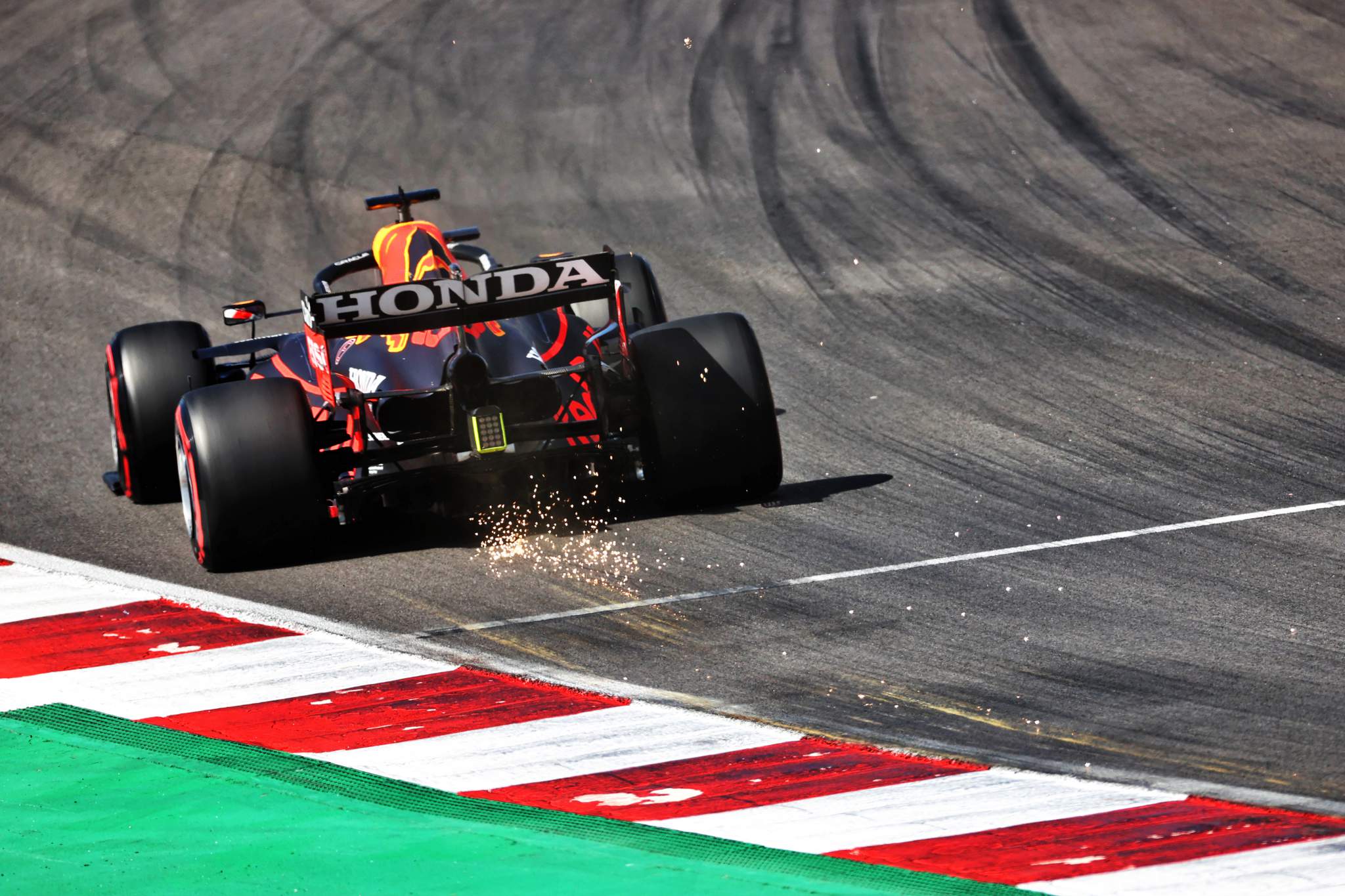
“So as a result I gave all the drivers the latitude to use the red and white kerb at that corner in a similar manner to Turn 5.
“However, they were told that if they gained a lasting advantage out of each of those – overtaking a car, faster in a mini-sector, whatever it may have been – it will be looked at.
“Having looked at it post-race it’s very clear that Max was a) off the track and b) that he was faster in that mini-sector than anyone and as a result got the fastest lap of the race, which is a world championship point.”
Verstappen’s track limits violation at Turn 4 in qualifying to lose pole position was similar. While it didn’t gain him an advantage because he lost a little time after running wide when he had to correct after the rear stepped out, the event notes stated that “a lap time achieved during any practice session or the race by leaving the track and cutting behind the red and white kerb on the exit of Turn 4, will result in that lap time being invalidated by the stewards”.
This was a hard-line, offering no room for interpretation, and it was right and proper that Verstappen’s time was deleted. He was far from alone in having times removed in qualifying.
Bahrain was also an explicit breach of track limits rules because Verstappen completed a pass for the lead on Hamilton by running wide at Turn 4. Having to give the place back was inevitable, but despite complaints of inconsistency as Hamilton ran wide there repeatedly during the race, it was at least consistent with the way the enforcement was communicated.
While the event notes stated that track limits were not being monitored at Turn 4 during the race, this was only for run of the mill breaches. Egregious violations such as Verstappen’s in going off track to complete an overtaking manoeuvre were always going to be penalised.
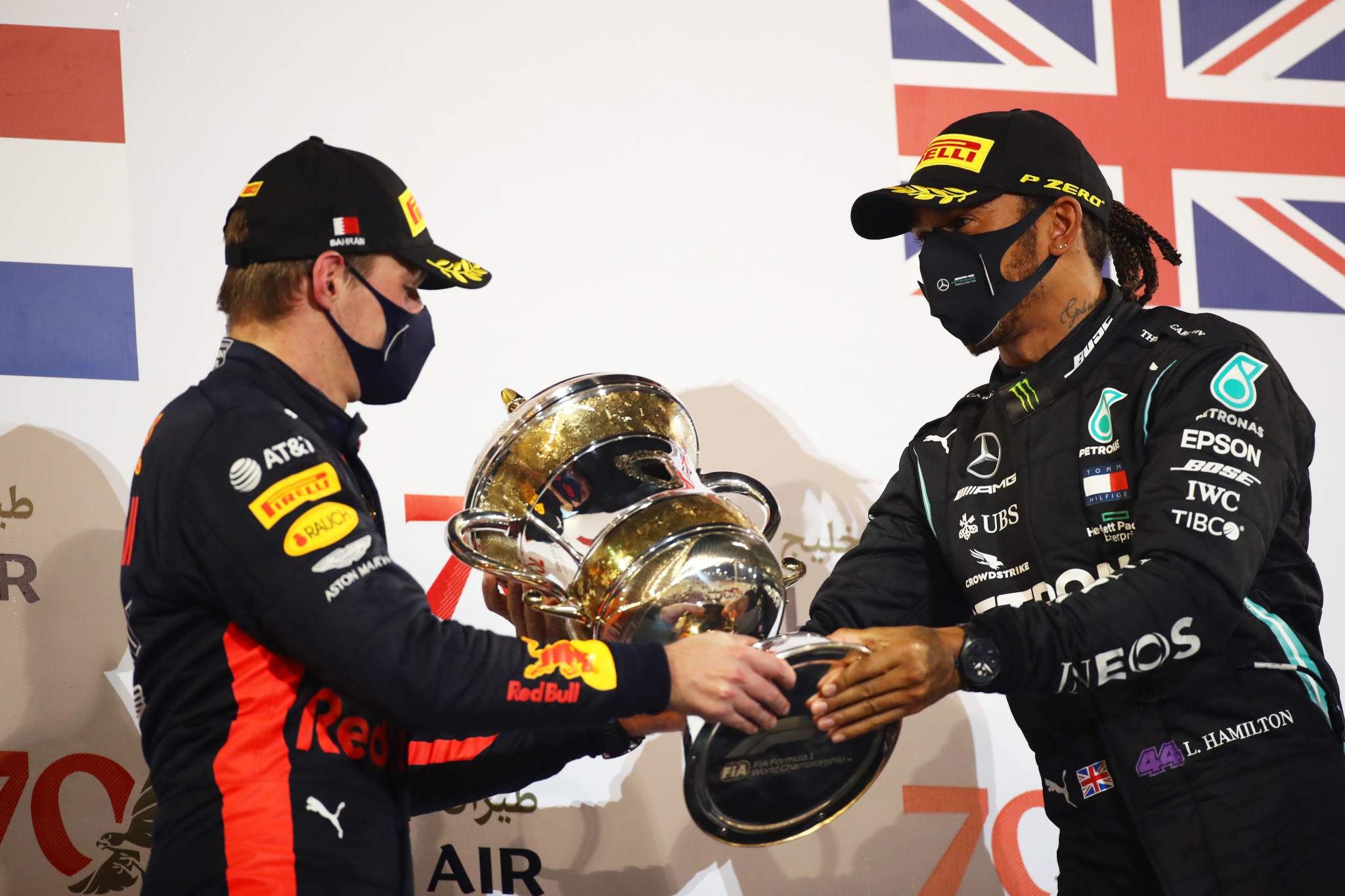
It’s legitimate to criticise the decision to penalise only extreme cases rather than tackling the aggregation of tiny gains Hamilton accumulated with his repeated minor offences, but this inconsistency was made emphatically clear before the race. While Hamilton and Mercedes understood the implication of that, Red Bull missed a trick and didn’t.
This is why Horner and Red Bull motorsport advisor Helmut Marko must look inwards rather than attacking the supposedly brutal punishments. Just because there’s plenty to criticise about track limits enforcement does not mean that these three cases were in any way unfair. It’s a simple enough premise to grasp that race wins, pole positions and fastest laps should not be earned this way.
However, Red Bull’s argument that Lando Norris should have given back the fourth position he temporarily took from Sergio Perez merits is less clear-cut.
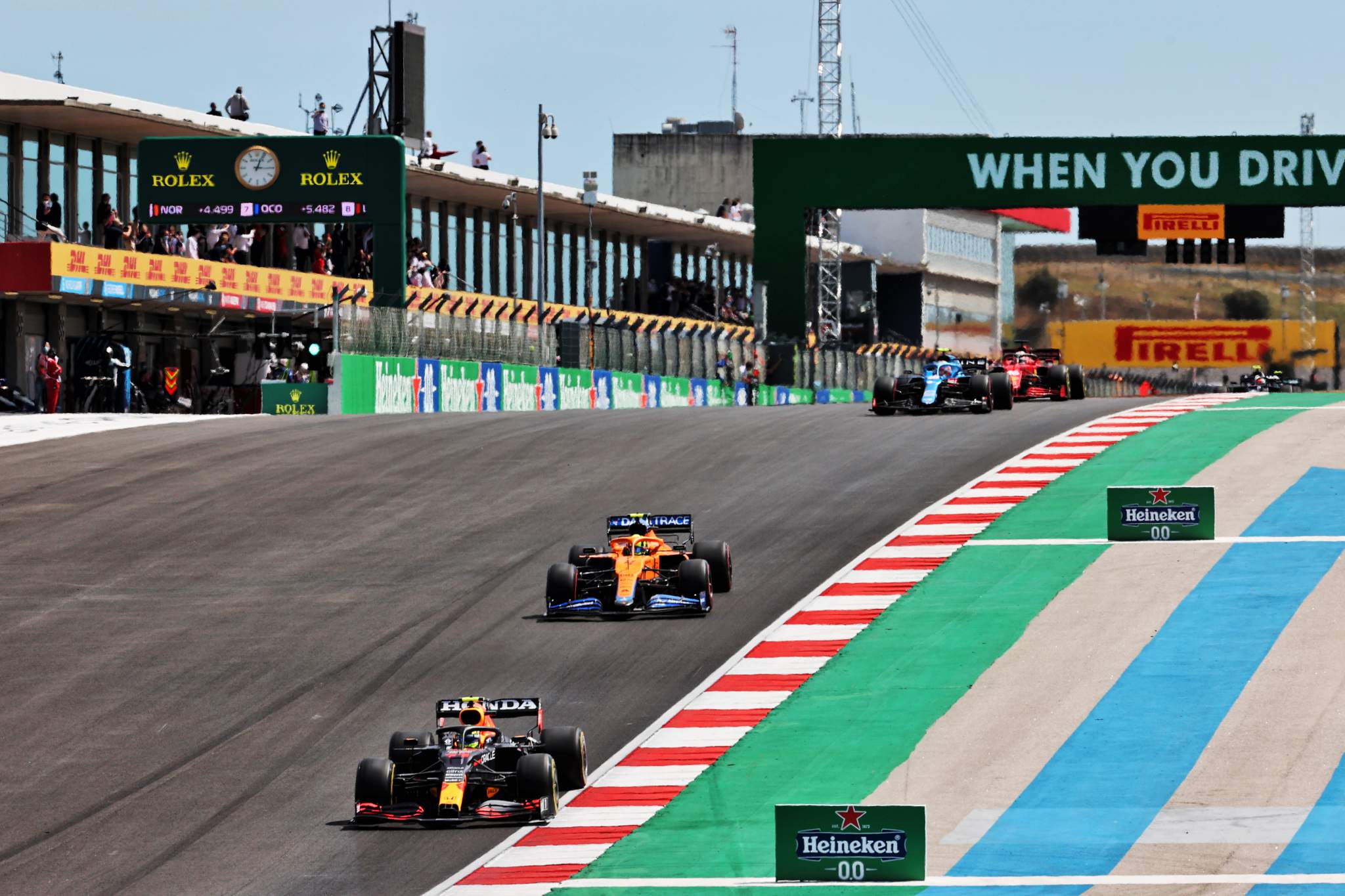
This references the seventh lap of the race, the first after the restart, when Norris overtook Perez into Turn 5 having, in Perez’s estimation, exceeded track limits at the Turn 4 right-hander.
“I looked in my mirrors and I saw Lando was totally off the track limits and then I didn’t really fight the position hard enough, thinking he was going to give me back the place,” said Perez.
“I probably misjudged that one and it took me a couple of laps to get past Lando and that created the gap to the leaders. I was basically off the race by then.”
The event notes did cite Turn 4 as a corner being monitored, stating “a lap time achieved during any practice session or the race by leaving the track and cutting behind the red and white kerb on the exit of Turn 4, will result in that lap time being invalidated by the stewards.”
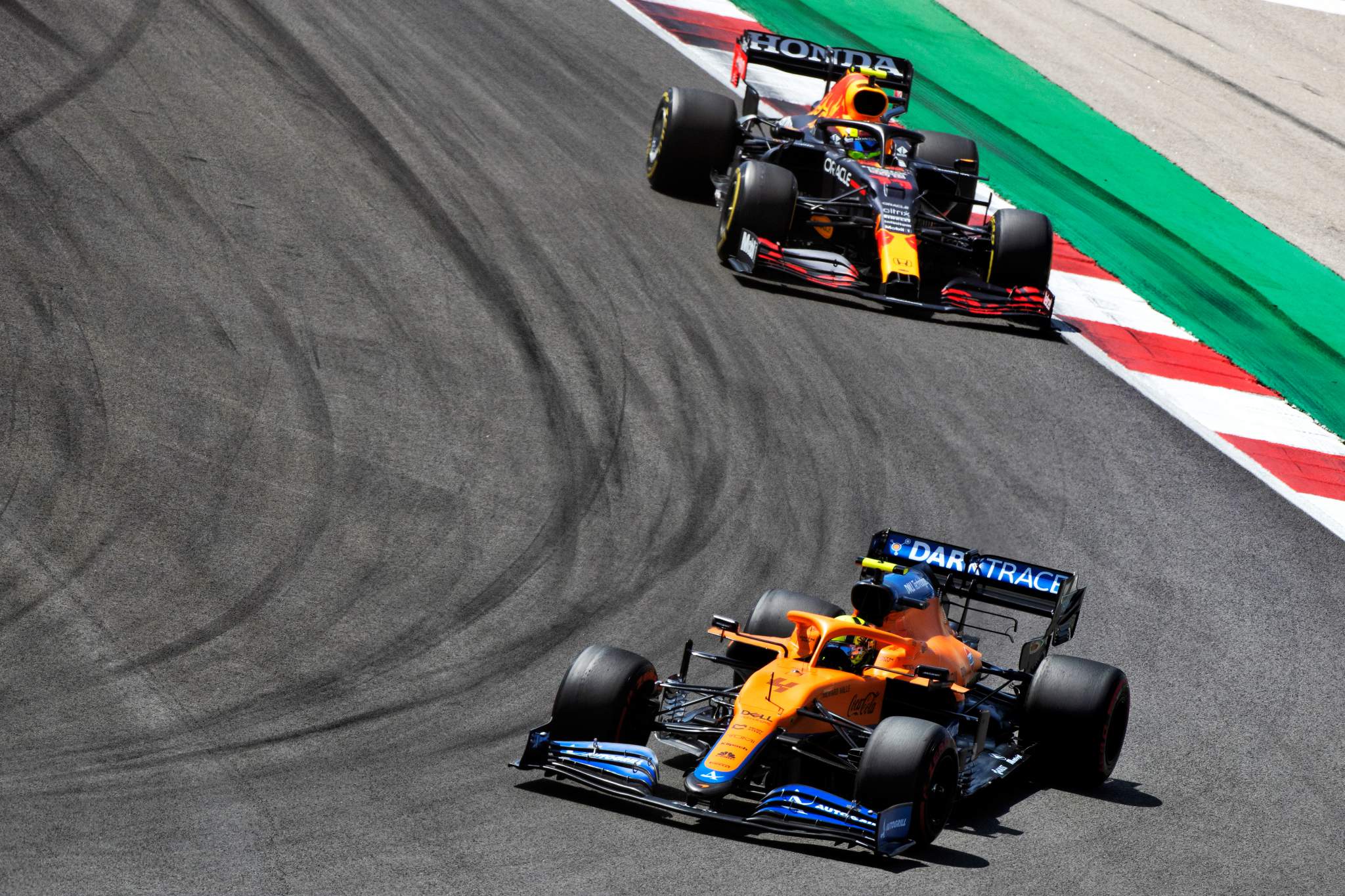
Norris’s onboard camera shows his front wheels were beyond the kerb, although there isn’t adequate footage to confirm if the rear did as well. But while Norris did have a lap time deleted in the race for exceeding the track limits at Turn 4, it was on lap 19 – making him one of four drivers to lose a lap time for an offence at that corner.
As Perez complained, Red Bull did report the incident to the stewards, who took no action.
“That was actually reported by Red Bull during the race and was reviewed,” said Masi.
“Lando did not overtake Sergio at Turn outside of the track, it was a passing manoeuvre under brakes into Turn 5 at the end of a DRS zone.”
What Masi says is correct, but Perez’s complaint was that Norris’s moved followed an advantage gained by the Turn 4 track limits violation.
If Norris did exceed track limits, then there is a case that the advantage gained contributed to his pass – although given the lap time stood stewards evidently did not believe it was.
But this does highlight a weakness when it comes to how advantages are judged. In cases like Verstappen’s fastest lap or, to use an example from his past, his overtake on Kimi Raikkonen to take third place on the last lap of the 2017 United States Grand Prix – the advantage is obvious.
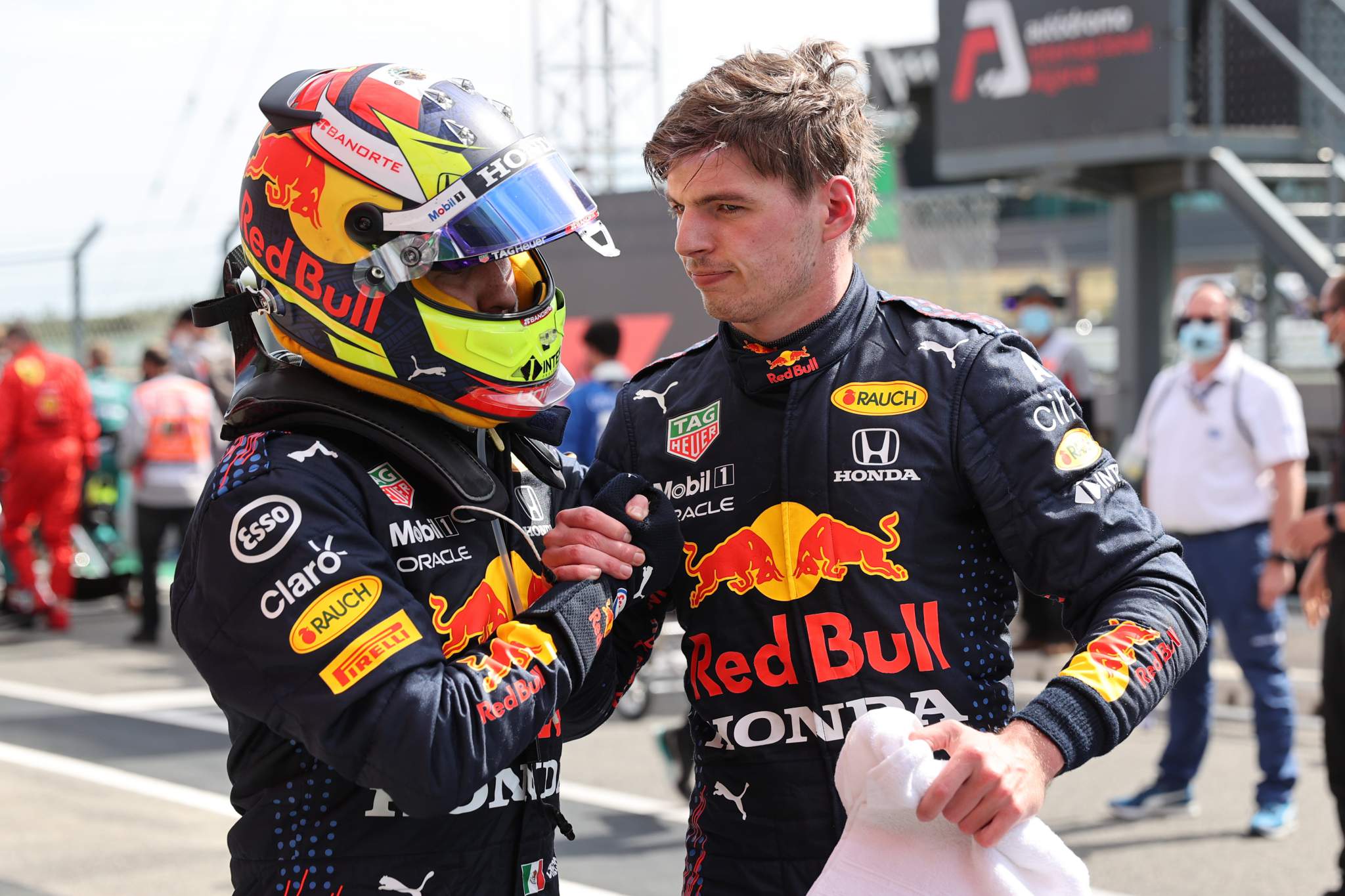
It’s clear Perez would have been better off trying harder to keep Norris behind rather than relying on the grace of the stewards. But this situation is a little more nuanced than Verstappen’s clear track limit violations and highlights the weakness in enforcement when it comes to very small gains that, after all, can add up over a race.
F1 certainly has a track limits problems and has a long way to go to solve them. But Red Bull has its own, very different, track limits problem.
If Verstappen and Red Bull are going to win this championship, they must be on top of such details. To obfuscate that fact by connecting it to the legitimate track limits criticisms, Red Bull is diverting attention from its real weakness.







